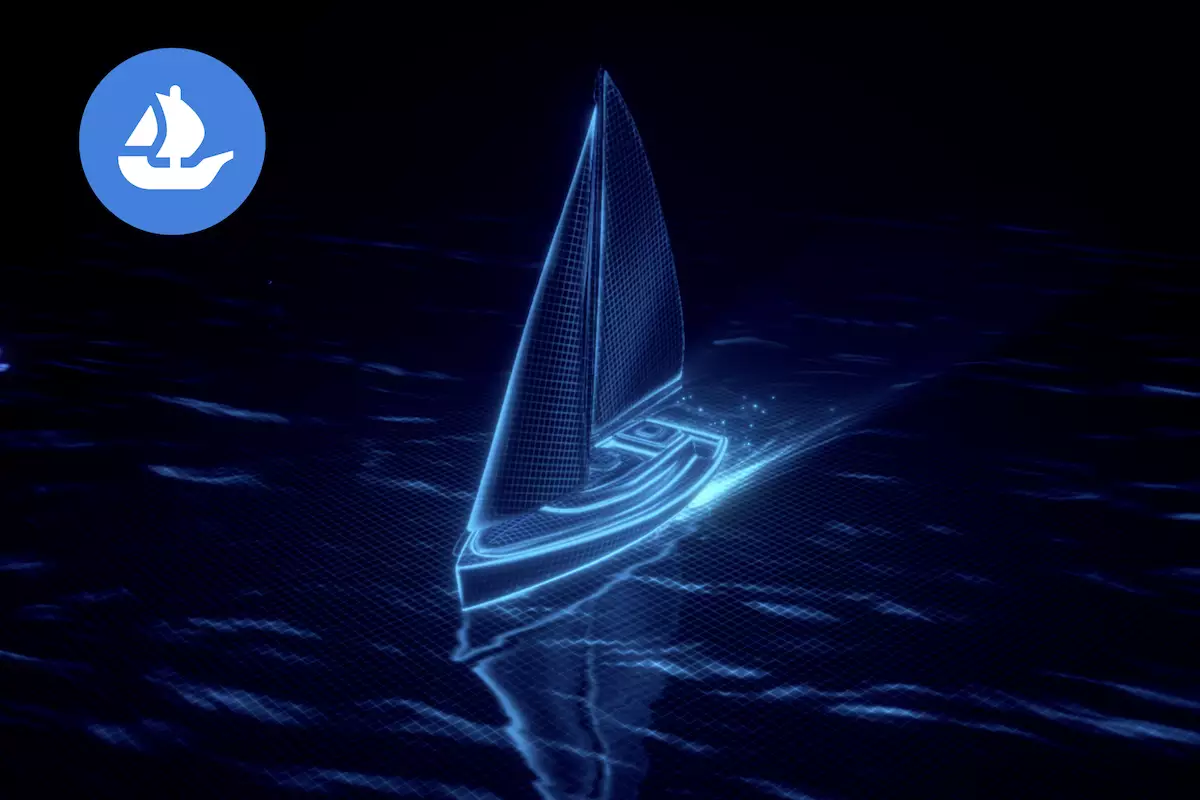As the digital landscape continues to evolve, the name “OpenSea” stands as a symbol of the rapid growth and sometimes tumultuous nature of the NFT (non-fungible token) marketplace. Initially recognized as the dominant player in the NFT realm—capturing more than 90% of trading volume—a recent shift in dynamics has forced OpenSea to reconsider its strategies to maintain relevance. This article delves into the latest developments surrounding the introduction of the OS2 platform, exploring the implications for NFT collectors, traders, and the wider community.
OpenSea’s journey began in the early days of NFTs when the general public was still grappling with the concept of digital ownership. By streamlining the process of listing, discovering, and trading unique digital assets, OpenSea rapidly gained a substantial foothold in the market. However, the ever-changing crypto ecosystem is notorious for its fleeting glories; competition was bound to challenge OpenSea’s reign. As various platforms emerged with promising features and user incentives, OpenSea’s market share began to dwindle, compelling the platform to rethink its approach.
In a significant move in 2023, OpenSea acquired the Gem NFT platform and subsequently rebranded it as “OpenSea Pro.” This shift was not merely cosmetic; it represented a strategic endeavor to reclaim market share by enhancing user engagement and feature offerings. The decision to distribute free Gemesis NFTs to existing Gem users through an airdrop was a clever initial step. Although this appeared to be a simple gesture of goodwill at the time, it inadvertently set the stage for the more significant OS2 launch.
Gemesis and Exclusive Access
Fast forward to this year, and holders of the Gemesis NFTs found themselves enjoying exclusive access to the OS2 platform, currently undergoing private beta testing. In a calculated strategy, OpenSea performed a blockchain “snapshot,” identifying nearly 50,000 wallets that held Gemesis NFTs and granting them immediate entry to OS2’s beta features. This strategy has, however, sparked debate and some dissatisfaction among the broader user base, particularly among high-volume traders who felt sidelined despite their substantial contributions to the platform.
Many of these traders expressed their frustrations on social media, lamenting the fact that their years of loyalty and large trading volumes did not grant them the same privileges as Gemesis holders. OpenSea’s reassuring statements via social media, asserting that long-time supporters would not be overlooked, have done little to quell concerns. The company has yet to detail a comprehensive plan for engaging its veteran user base, leaving many feeling uncertain about their place in the new ecosystem.
A noteworthy feature of OS2 is its introduction of an Experience Points (XP) system designed to reward user activity. Participants can earn XP for various actions, such as listing NFTs, making offers, and engaging in community discussions on OpenSea’s Discord channel. This system echoes the strategies employed by rival marketplaces like Blur, who successfully managed to seize a segment of the user base away from OpenSea through its own incentives.
The goal behind the XP system is to stimulate engagement and foster an active community on the platform. This poses the question: Could these XP points eventually translate into real, tradable tokens? Although OpenSea has yet to release its own token—a development that remains shrouded in speculation—the possibility of a token airdrop has ignited considerable buzz in online discussions. The allure of potential free cryptocurrency has only added to the fervor surrounding OpenSea’s latest initiatives.
In light of recent changes, the NFT marketplace landscape is undergoing a significant transformation. With competitors like Blur and Magic Eden gaining traction and developing their own tokenomics, the pressure is on OpenSea to innovate or risk further loss of market share. Staffing reductions in late 2024 may have been a tactical move to allocate resources toward developing OS2 efficiently, but this also raises concerns about the company’s direction and capabilities.
As the private beta progresses, the collection of user feedback will be instrumental in shaping OS2’s future. OpenSea stands at a crossroads: it must effectively marry the dual goals of attracting new users while also appreciating the loyalty of its long-term supporters. The firm’s ability to balance these competing interests will be critical in determining whether OS2 can indeed reinvigorate its standing within the crowded NFT scene.
Ultimately, the future of OpenSea rests on its capacity for adaptation and responsiveness to user needs—qualities that will dictate whether they remain a leading force in this ever-evolving digital frontier. For NFT enthusiasts and traders alike, the evolving tale of OpenSea offers a compelling narrative, full of promise and uncertainty. Keep an eye on developments, especially regarding that much-speculated token, as the marketplace shakes off its past and endeavors towards a new, dynamic era.














Leave a Reply